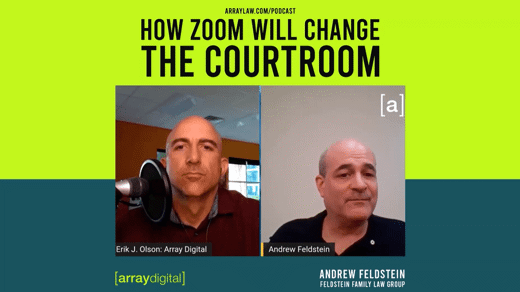There is something about a courtroom and the paperwork you need to fill out that makes people nervous, in fact so nervous that most clients choose to avoid the whole court process when trying to resolve their separation. Unfortunately, or fortunately, not everyone can avoid the nasty courtroom and those complicated forms, and many individuals end up marching to court to resolve their separation not knowing what they need to do or how to properly fill out the forms. We often fear the unknown, so today I would like to take you through some of the preliminary steps in starting and responding to a Court Application to hopefully educate you about same and to alleviate some of your anxiety about the court process.
Although the court process can involve a lot of talking in front of a judge, the first step is always getting your paperwork completed so that the judge knows what your matter is about. If you decide that you want or need to start a Court Application, the first step is preparing a document called an “Application”, which sets out all of the claims you want to make, all of the orders you want the Court to make, and all the basic facts you are relying upon for the Court to make those orders. It is a way of committing to paper what you want, and it is an important document, as if your matter proceeds to a trial, the trial judge will read your Application as part of his or her preparation. You will also need to fill out an “Affidavit in Support of a Claim for Custody or Access”, if you make claims pertaining to the custody or access of a child. This document in part provides the Court with details of your plan for and relationship to the child, and discloses whether you have had any involvement with a Children’s Aid Society or if you have a criminal record. As well, if you have any property claims or you want your spouse to contribute to special or extraordinary expenses for a child, you will need to fill out a “Financial Statement”, which confirms your income, lists your expenses, and provides details of your assets and liabilities on the date you married your spouse, the date you separated from your spouse, and the date you sign the Financial Statement. If you decide to retain a lawyer, you and your lawyer will work together to prepare all of these documents and to decide what kind of claims you need to make.
Once the Court has issued the Application, and you personally serve your spouse with a copy of the Application, you must then give your spouse 30 days to answer your Application, by filling out a cleverly named document called…the “Answer”. The Answer has two parts, first you are answering the claims made in the Application that we talked about earlier, and providing the facts upon which you are relying. Second, you are given the option of making your own claims, asking for specific orders and again providing those all important facts upon which you want to rely. If you decide to retain a lawyer, you and your lawyer can discuss whether you agree with any of the claims in the original Application, and if not, what facts you need to provide to support your position. As well, you and your lawyer can also discuss whether you have any claims you would like to make if you are required to respond to an Application. Again this is the way of telling the Court in writing what you think of the Application, and what you are claiming. The completed Answer must then be served on the Applicant. This is also a very important document as the trial judge will also want to read it as part of his or her preparation. You may also need to fill out an Affidavit in Support of a Claim for Custody or Access and a Financial Statement, depending on the type of claims you are responding to, and/or the type of claims you are making, and your lawyer can assist with completing these documents as well.
The Applicant then has the opportunity to Reply to the claims made in the Answer, which must be done within 10 days. This is not an opportunity to make new claims, but instead the focus is on stating which of the claims in the Answer you agree with, and if you do not agree with a claim you must give the facts upon which you rely. Your lawyer can assist you with deciding whether you need to complete a Reply, and what you would want to put in the document. Again, consider the importance of this document as a thorough review of it is part of any trial judge’s preparation.
All of the documents listed above are usually completed before either spouse sees the inside of a courtroom, as remember – putting your position on paper is the all important first step. Usually the first court appearance is the Case Conference, however sometimes the parties need to get to court on an emergency basis and someone brings a motion. For more information about Conferences and Motions, please see prior blogs.
Remember, the paperwork you need to fill out for Court may look intimidating and hard to fill out, but don’t just put anything down to get it done. The person who may make major decisions about your life and lives of your children will be reading your court papers, so give them the time and care they deserve. Consider having a lawyer assist you with the preparation and/or providing you with the advice you need to fill out the papers properly, and the whole experience should be a lot less intimidating. If you think you may need to commence an Application, or if you have been served with one and need to complete your Answer and want to obtain independent legal advice, please contact us for a consultation at 905-581-7222. For the Feldstein Family Law Group, I’m Nick Slinko.



